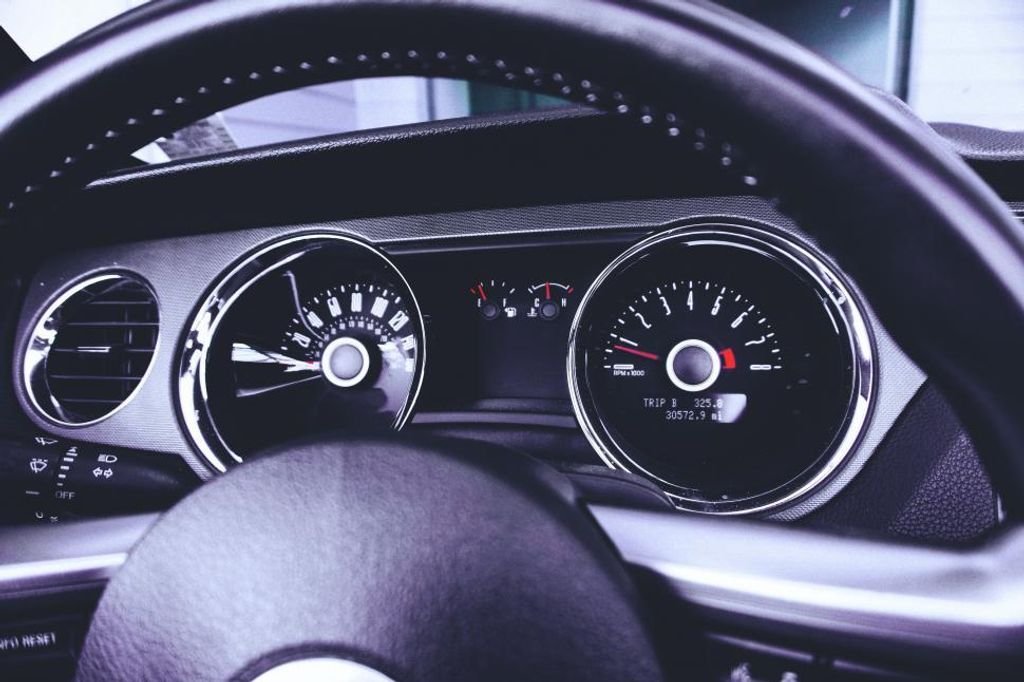The future of automotive technology is constantly evolving, and car gadgets play a crucial role in enhancing the driving experience. In 2024, we can expect to see a wide range of innovative car gadgets that will revolutionize the way we interact with our vehicles. From augmented reality windshields to advanced driver assistance systems, these gadgets are designed to make driving safer, more convenient, and more enjoyable. Let’s take a look at the top 10 car gadgets of 2024 and explore their key takeaways.
Key Takeaways
- Augmented reality windshields provide real-time information and enhance navigation experience.
- Biometric vehicle access offers secure and convenient access through fingerprint and facial recognition.
- Autonomous parking systems assist in parking with automated assistance and remote control.
- Advanced driver assistance systems, such as adaptive cruise control and lane keeping assist, improve safety on the road.
- Electric vehicle charging infrastructure includes fast charging stations and wireless charging technology.
Augmented Reality Windshield
Displaying Real-Time Information
The augmented reality windshield provides drivers with real-time information directly on the windshield, enhancing their driving experience. This technology allows important data such as speed, navigation instructions, and traffic updates to be displayed in the driver’s line of sight, reducing the need to look away from the road. With this innovative feature, drivers can stay informed without distractions, ensuring a safer and more convenient journey.
In addition to displaying essential driving information, the augmented reality windshield can also provide subtle emphasis on important details. For example, it can highlight potential hazards on the road, such as pedestrians or obstacles, using italics or different colors. This helps drivers quickly identify potential dangers and take appropriate action to avoid accidents.
To summarize, the augmented reality windshield not only displays real-time information but also enhances the overall driving experience by providing subtle emphasis on important details, making it a valuable car gadget for the future.
Enhancing Navigation Experience
The augmented reality windshield not only displays real-time information but also enhances the navigation experience. With the windshield acting as a heads-up display, drivers can see important information such as turn-by-turn directions, speed limits, and upcoming points of interest directly in their line of sight. This eliminates the need to constantly look down at a separate navigation device or smartphone, allowing for a safer and more convenient driving experience.
In addition to displaying navigation information, the augmented reality windshield can also provide helpful alerts and notifications. For example, it can highlight potential hazards on the road, such as construction zones or accidents, and provide alternative routes to avoid traffic congestion. This proactive approach to navigation helps drivers make informed decisions and navigate more efficiently.
To further enhance the navigation experience, the windshield can also integrate with other smart devices and services. For instance, it can sync with a driver’s calendar to provide reminders for upcoming appointments or suggest nearby parking options. By seamlessly integrating with various technologies, the augmented reality windshield offers a comprehensive and intuitive navigation solution for drivers.
Biometric Vehicle Access
Fingerprint Recognition
Fingerprint recognition is a cutting-edge biometric technology that is revolutionizing vehicle access. With this advanced feature, drivers can securely unlock their cars with just a touch of their finger. This eliminates the need for traditional keys or key fobs, providing a convenient and secure way to access vehicles.
In addition to enhancing security, fingerprint recognition also offers a seamless user experience. Once registered, drivers can simply place their finger on the designated sensor to unlock the car. This eliminates the hassle of searching for keys or entering a passcode.
Table: Benefits of Fingerprint Recognition
| Benefits |
|---|
| Enhanced security |
| Convenient access |
| Seamless user experience |
Fingerprint recognition is a reliable and efficient technology that ensures only authorized individuals can access the vehicle. It provides peace of mind for car owners and enhances the overall driving experience.
Facial Recognition
Facial recognition technology is revolutionizing the way we access and secure our vehicles. By using advanced algorithms to analyze unique facial features, this technology provides a secure and convenient method of vehicle access. Biometric data, such as facial patterns, is stored securely within the vehicle’s system, ensuring only authorized individuals can unlock and start the car.
One of the key advantages of facial recognition is its accuracy and speed. It can quickly identify the driver and automatically adjust personalized settings, such as seat position, temperature, and music preferences. This eliminates the need for manual adjustments and enhances the overall driving experience.
Additionally, facial recognition technology can be integrated with other car gadgets, such as the augmented reality windshield. By recognizing the driver’s face, the windshield can display relevant information, such as navigation instructions and real-time traffic updates, directly in the driver’s line of sight.
To summarize, facial recognition technology offers a secure and convenient way to access vehicles, personalize settings, and integrate with other car gadgets for an enhanced driving experience.
Autonomous Parking System
Automated Parking Assistance
Automated parking assistance is a revolutionary feature that takes the stress out of parking. With this technology, drivers no longer have to worry about maneuvering their vehicles into tight spaces or struggling to find a parking spot. The system uses sensors and cameras to detect available parking spaces and automatically steers the car into the spot. This not only saves time but also reduces the risk of accidents and scratches.
One of the key benefits of automated parking assistance is its ability to maximize parking space utilization. The system can park cars in a more efficient manner, allowing for more vehicles to be accommodated in a given area. This is especially useful in crowded urban areas where parking is limited.
In addition to making parking easier, automated parking assistance also enhances safety. The system is designed to detect obstacles and pedestrians, preventing collisions and ensuring the safety of both the driver and others around the vehicle.
Table: Benefits of Automated Parking Assistance
| Benefit | Description |
|---|---|
| Convenience | No more searching for parking spaces or struggling to park in tight spots. |
| Space utilization | Maximizes parking space utilization, allowing for more vehicles to be accommodated. |
| Safety | Detects obstacles and pedestrians, preventing collisions and ensuring safety. |
Tip: Automated parking assistance is a game-changer for urban dwellers who struggle with parking. It not only saves time but also reduces the risk of accidents and scratches. Consider investing in a car equipped with this technology for a stress-free parking experience.
Remote Parking Control
Remote Parking Control is an innovative feature that allows drivers to park their vehicles from outside the car. With this technology, drivers can use their smartphones or smartwatches to control the parking process. Imagine being able to park your car in a tight spot without even being inside the vehicle. This feature is especially useful in crowded parking lots or narrow streets where it can be challenging to maneuver the car.
One of the key advantages of Remote Parking Control is the convenience it offers. Instead of having to squeeze into a tight parking space, drivers can simply stand outside the car and use their mobile devices to park it accurately. This not only saves time but also reduces the risk of accidental scratches or dents.
To use Remote Parking Control, the vehicle needs to be equipped with sensors and cameras that provide a real-time view of the surroundings. The driver can then use the mobile app or smartwatch interface to control the steering, acceleration, and braking of the car.
Benefits of Remote Parking Control:
- Enhanced convenience and ease of parking
- Reduced risk of accidents and damage
- Increased accessibility for drivers with mobility limitations
With Remote Parking Control, parking your car becomes a hassle-free and stress-free experience. Say goodbye to the frustration of searching for a parking spot or struggling to fit into tight spaces. This advanced technology brings us one step closer to fully autonomous parking systems.
Advanced Driver Assistance Systems
Adaptive Cruise Control
Adaptive Cruise Control is an advanced driver assistance system that automatically adjusts the vehicle’s speed to maintain a safe distance from the car ahead. This technology uses sensors and radar to detect the distance and speed of the vehicles in front, allowing the car to slow down or accelerate accordingly.
With Adaptive Cruise Control, drivers can enjoy a more relaxed and comfortable driving experience, especially during long highway journeys. It reduces the need for constant speed adjustments and helps prevent rear-end collisions.
Here are some key benefits of Adaptive Cruise Control:
- Improved safety: By maintaining a safe distance from the vehicle ahead, Adaptive Cruise Control reduces the risk of accidents caused by sudden braking or tailgating.
- Reduced driver fatigue: The system takes over the task of maintaining a consistent speed, allowing the driver to focus more on the road and less on speed control.
- Enhanced fuel efficiency: Adaptive Cruise Control optimizes the vehicle’s speed, leading to smoother acceleration and deceleration, which can result in improved fuel economy.
Tip: It is important for drivers to remain attentive and ready to take control of the vehicle at any time, even when using Adaptive Cruise Control.
Lane Keeping Assist
Lane Keeping Assist is an advanced driver assistance system that helps drivers stay in their lane and avoid unintentional lane departures. It uses cameras and sensors to monitor the vehicle’s position on the road and provides corrective steering inputs if the vehicle starts to drift out of its lane.
Lane Keeping Assist is particularly useful on long highway drives, where driver fatigue and distractions can increase the risk of drifting into adjacent lanes. By providing gentle steering corrections, this technology helps prevent accidents and promotes safer driving.
Benefits of Lane Keeping Assist:
- Reduces the risk of lane departure accidents
- Enhances driver awareness and attentiveness
- Improves overall road safety
Tips for using Lane Keeping Assist effectively:
- Keep your hands on the steering wheel at all times
- Pay attention to road conditions and lane markings
- Regularly calibrate the system to ensure accurate performance
Remember, Lane Keeping Assist is designed to assist drivers, but it is still important to remain focused and actively engaged in driving.
Electric Vehicle Charging Infrastructure
Fast Charging Stations
Fast charging stations are a crucial component of the electric vehicle charging infrastructure. These stations are designed to provide a quick and convenient way to recharge electric vehicles, reducing the time spent waiting for a full charge. With fast charging technology, drivers can significantly reduce their charging time, making electric vehicles more practical and accessible.
Fast charging stations are equipped with high-power chargers that can deliver a large amount of electricity to the vehicle’s battery in a short period. This allows drivers to quickly top up their battery levels, providing them with the freedom to travel longer distances without worrying about running out of power.
In addition to their speed, fast charging stations also offer compatibility with various electric vehicle models, ensuring that drivers can easily find a station that suits their vehicle’s charging requirements. As the demand for electric vehicles continues to grow, the availability of fast charging stations will play a crucial role in supporting the widespread adoption of electric vehicles.
Wireless Charging Technology
Wireless charging technology is revolutionizing the way we charge our electric vehicles. Instead of relying on traditional charging cables, wireless charging allows for convenient and hassle-free charging. With wireless charging, you can simply park your car over a charging pad and the charging process will begin automatically.
One of the key advantages of wireless charging is its efficiency. Wireless charging pads are designed to transfer power to the vehicle with minimal energy loss, ensuring that the charging process is fast and efficient.
In addition to convenience and efficiency, wireless charging also offers a safer charging experience. Wireless charging systems are equipped with safety features such as temperature monitoring and foreign object detection to prevent any potential hazards.
Overall, wireless charging technology is a game-changer in the world of electric vehicles, providing a convenient, efficient, and safe way to charge your car.
Vehicle-to-Vehicle Communication
Real-Time Traffic Updates
Real-time traffic updates provide drivers with valuable information about current road conditions, helping them make informed decisions and avoid traffic congestion. With the advancement of technology, vehicles can now communicate with each other and share real-time data, such as traffic flow, accidents, and road closures. This information is then displayed on the vehicle’s dashboard or navigation system, allowing drivers to choose the most efficient route.
In addition to avoiding traffic jams, real-time traffic updates also contribute to safer driving. By alerting drivers to potential hazards, such as accidents or road construction, they can adjust their driving behavior accordingly and reduce the risk of accidents.
To ensure the accuracy and reliability of real-time traffic updates, car manufacturers are partnering with mapping and navigation companies, as well as utilizing data from government agencies and other sources. This collaborative effort ensures that drivers receive the most up-to-date and accurate information, enhancing their overall driving experience.
Collision Avoidance System
The Collision Avoidance System represents a significant leap in vehicular safety, utilizing advanced sensors and communication technologies to prevent accidents. By exchanging real-time data with surrounding vehicles, the system can anticipate potential hazards and react accordingly.
Key Features:
- Proactive alerts to drivers about imminent collisions.
- Automatic braking when a threat is detected.
- Integration with other safety systems for a comprehensive safety net.
Safety Tip: Always keep your system’s software updated to ensure the best performance and latest safety enhancements.
The effectiveness of these systems is evident in the reduction of traffic incidents, making them an indispensable feature in modern vehicles. As the technology evolves, we can expect even more robust and intuitive collision avoidance capabilities.
Smart Car Health Monitoring
Diagnosing Vehicle Issues
When it comes to diagnosing vehicle issues, advanced car diagnostic systems are becoming increasingly important. These systems use sophisticated sensors and algorithms to analyze various aspects of a vehicle’s performance and identify potential problems.
One of the key benefits of these diagnostic systems is their ability to provide real-time alerts when an issue is detected. This allows drivers to take immediate action and prevent further damage to their vehicle.
In addition to real-time alerts, these systems also store historical data that can be accessed by mechanics during maintenance or repairs. This data provides valuable insights into the vehicle’s performance over time and can help identify recurring issues.
To ensure accurate diagnosis, it is essential for these systems to be regularly updated with the latest software and firmware. This ensures compatibility with new vehicle models and improves the accuracy of diagnostic results.
Overall, advanced car diagnostic systems play a crucial role in maintaining vehicle health and preventing major breakdowns. By providing real-time alerts and storing historical data, these systems empower drivers and mechanics to address issues proactively and keep vehicles running smoothly.
Predictive Maintenance
Predictive maintenance is a crucial aspect of smart car health monitoring. By analyzing data from various sensors and systems, car manufacturers can identify potential issues before they become major problems. This proactive approach not only helps prevent breakdowns and costly repairs but also ensures the safety of the driver and passengers.
To implement predictive maintenance effectively, car manufacturers need to collect and analyze large amounts of data. This includes information about the vehicle’s performance, usage patterns, and environmental conditions. By leveraging artificial intelligence and machine learning algorithms, car manufacturers can identify patterns and anomalies that indicate potential maintenance needs.
Benefits of Predictive Maintenance
- Reduced Downtime: By addressing maintenance issues before they cause a breakdown, predictive maintenance minimizes the time a vehicle spends off the road.
- Cost Savings: Proactively addressing maintenance needs can help car owners save money by avoiding expensive repairs.
- Improved Safety: Predictive maintenance ensures that vehicles are in optimal condition, reducing the risk of accidents caused by mechanical failures.
Tip: Regularly monitoring and addressing maintenance needs can extend the lifespan of a vehicle and enhance its overall performance.
Gesture Control Technology
Hands-Free Operation
Hands-free operation is a revolutionary feature in car gadgets that allows drivers to control various functions of their vehicle without the need for physical contact. With the advancements in gesture control technology, drivers can now use simple hand movements to adjust the volume, change radio stations, or even answer phone calls while keeping their hands on the steering wheel.
This technology not only enhances convenience but also improves safety on the road. By minimizing distractions and reducing the need to take their hands off the wheel, drivers can maintain better focus and reaction time while driving.
Additionally, hands-free operation promotes a more intuitive user interface, making it easier for drivers to interact with the vehicle’s infotainment system. Whether it’s adjusting the temperature, accessing navigation features, or controlling multimedia options, this feature provides a seamless and user-friendly experience.
In summary, hands-free operation is a game-changer in the automotive industry, offering drivers a safer and more convenient way to interact with their vehicles.
Intuitive User Interface
The intuitive user interface is a key feature of the gesture control technology in car gadgets. It allows drivers to interact with the vehicle’s systems and controls using natural hand gestures, eliminating the need for physical buttons or touchscreens. Gesture control enables a more seamless and convenient user experience, as drivers can easily adjust settings, change music tracks, or answer calls without taking their hands off the steering wheel.
One example of a gesture control feature is the ability to raise or lower the volume by simply making a rotating motion with your hand. This intuitive gesture replaces the traditional volume knob or touchscreen slider, providing a more intuitive and ergonomic way to control audio settings.
In addition to gesture control, the intuitive user interface also includes voice commands. Drivers can use voice recognition technology to perform various tasks, such as making phone calls, sending messages, or setting navigation destinations. By combining gesture control and voice commands, the intuitive user interface offers a safer and more convenient way to interact with car gadgets while driving.
To summarize, the intuitive user interface in car gadgets enhances the overall user experience by allowing drivers to interact with the vehicle’s systems and controls using natural hand gestures and voice commands. This intuitive interaction method improves safety and convenience, as it eliminates the need for physical buttons or touchscreens and allows drivers to keep their hands on the steering wheel and their eyes on the road.
Conclusion
In conclusion, the future of automotive technology is filled with exciting possibilities. From autonomous driving to advanced safety features, car gadgets in 2024 are set to revolutionize the way we drive. With the integration of artificial intelligence and Internet of Things technology, cars will become smarter, safer, and more efficient. Whether it’s the convenience of wireless charging or the thrill of virtual reality entertainment systems, these top 10 car gadgets will enhance the driving experience and pave the way for a new era of transportation.
Frequently Asked Questions
How does the augmented reality windshield work?
The augmented reality windshield uses advanced technology to overlay digital information onto the windshield, providing real-time information such as navigation directions, speed limits, and traffic updates.
Can the biometric vehicle access be hacked?
Biometric vehicle access systems are designed with advanced security measures to prevent unauthorized access. However, no system is completely hack-proof, so manufacturers continuously update and improve their security protocols to stay ahead of potential threats.
How does the autonomous parking system work?
The autonomous parking system utilizes sensors, cameras, and advanced algorithms to detect parking spaces and maneuver the vehicle into the designated spot. It can also be controlled remotely using a smartphone app.
What are the benefits of advanced driver assistance systems?
Advanced driver assistance systems provide increased safety and convenience on the road. Features such as adaptive cruise control help maintain a safe distance from other vehicles, while lane keeping assist helps prevent unintentional lane departure.
How fast can electric vehicles charge at fast charging stations?
Fast charging stations can charge electric vehicles at a much higher rate compared to standard charging stations. Depending on the vehicle and charging infrastructure, fast charging can provide a significant amount of charge in a short amount of time, typically ranging from 30 minutes to an hour.
How does vehicle-to-vehicle communication improve road safety?
Vehicle-to-vehicle communication allows vehicles to exchange real-time information such as speed, location, and direction. This information can be used to warn drivers of potential collisions, improve traffic flow, and enhance overall road safety.





